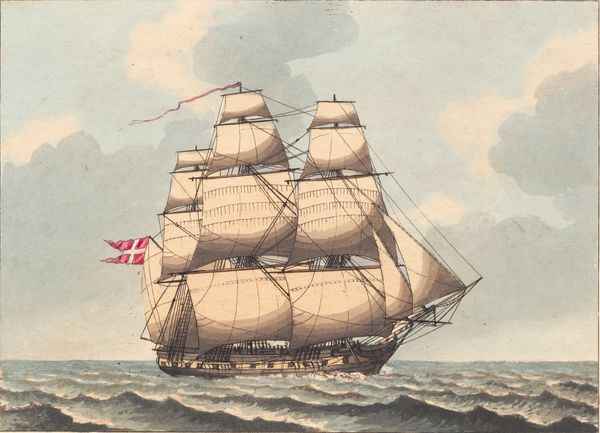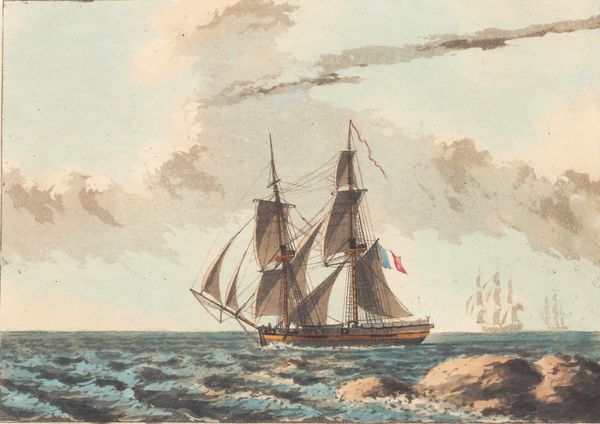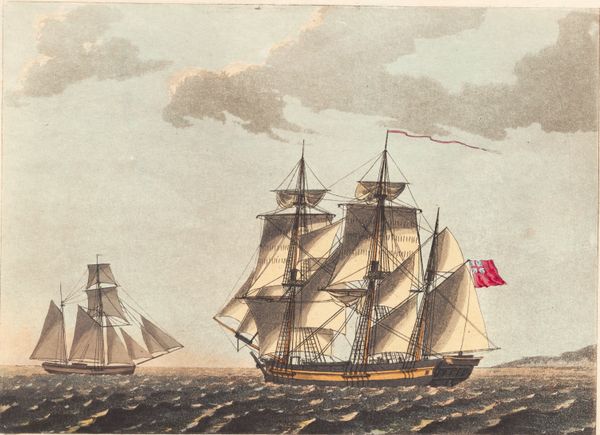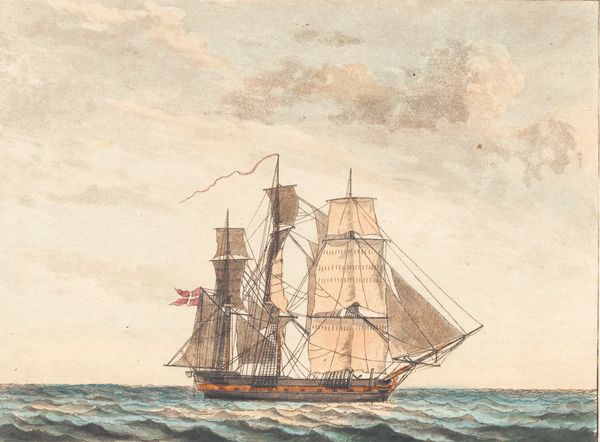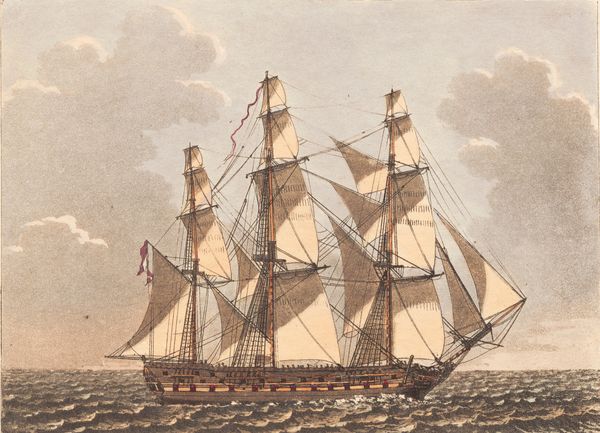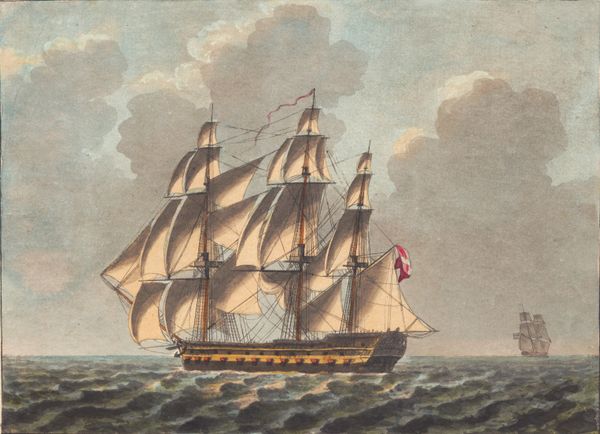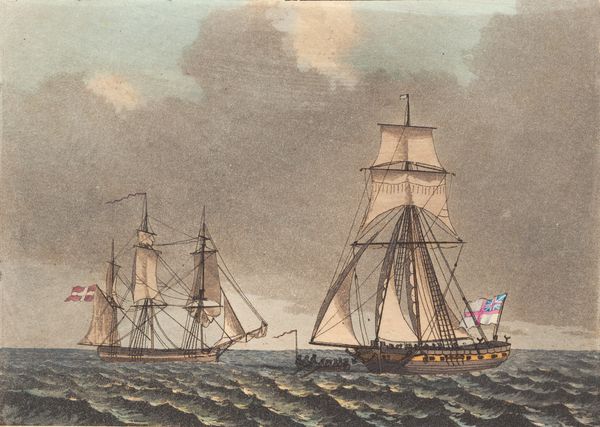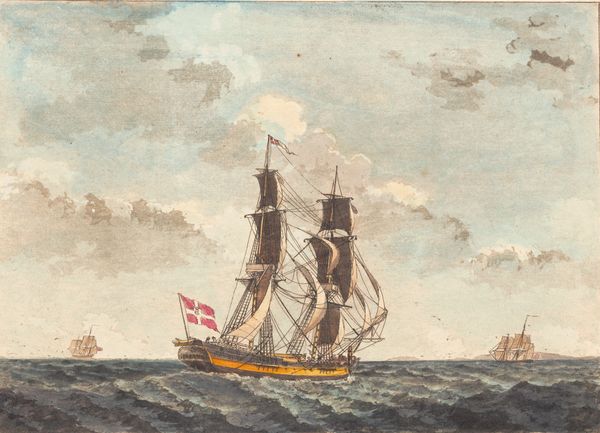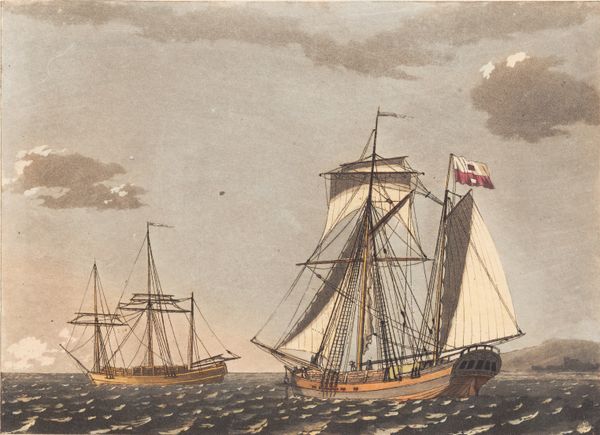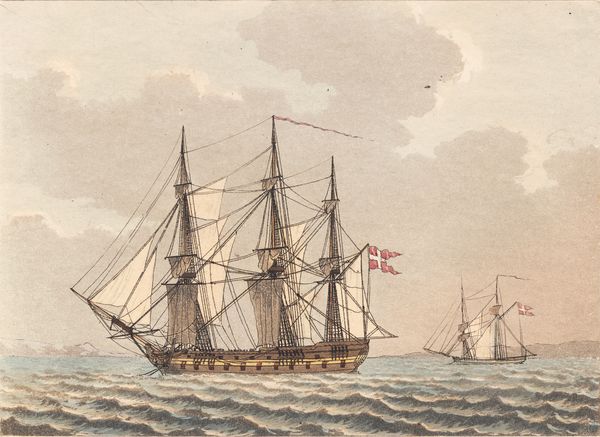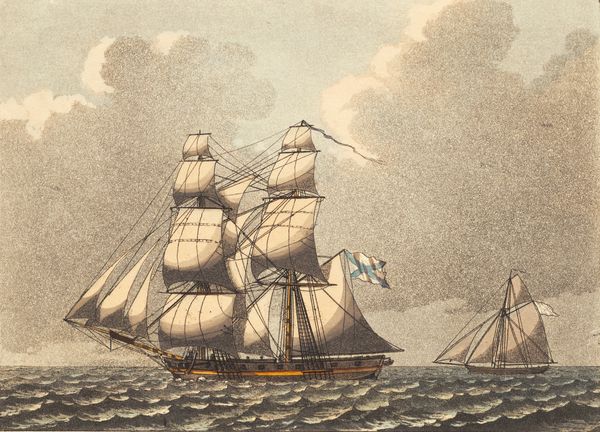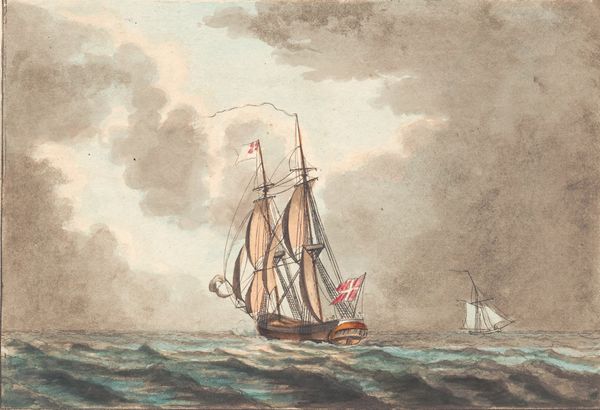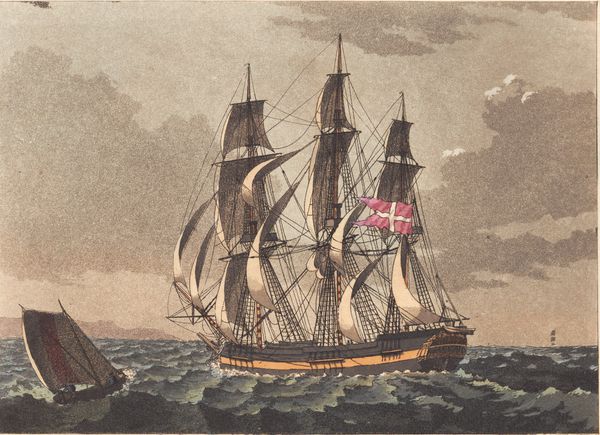
aquatint, print, watercolor
#
aquatint
# print
#
landscape
#
watercolor
#
romanticism
#
watercolor
Dimensions: 188 mm (height) x 237 mm (width) (bladmaal), 165 mm (height) x 216 mm (width) (Plademål), 139 mm (height) x 193 mm (width) (billedmaal)
Curator: This watercolor and aquatint print from 1805, titled "En svensk fregat med rebede merseil under vinden," depicts a Swedish frigate in motion. The artist, Niels Truslew, captures a moment laden with a subtle kind of anticipation. Editor: Yes, a kind of restrained drama. Look at how the wind catches the Swedish flag, the texture of the rough sea juxtaposed against the meticulously rendered rigging – I immediately think about the labor involved in building and maintaining a ship like this. Curator: Absolutely. It's crucial to recognize the historical context. Sweden was navigating complex political waters in the early 19th century. Maritime power was not just about military might, but about projecting national identity. This ship, proudly bearing the Swedish flag, is a symbol of that ambition. Editor: And the material realities! We see the rendered sails and timber, the precise articulation of their purpose—all speak to the skill of the craftsmen. I'm curious about the type of watercolor and aquatint Truslew used. How did these choices affect the production of prints and influence artistic expression at that time? Was the paper hand-made? Curator: That is difficult to asses from only a viewing. What strikes me is Truslew’s choice to represent the ship under sail but clearly shortened, the courses are tied in—this is no heroic scene, or perhaps he offers us the calm that occurs immediately before or after moments of conflict. The statecraft, mercantile endeavors, and power of Sweden rests within the careful management of its ships at sea. Editor: I like the way it avoids typical naval glorification. It feels more observant. But do you think this understated quality might reflect the shifting status of Swedish naval power during the Napoleonic Wars? Curator: That's certainly a possible interpretation, a moment captured which speaks to Sweden’s ambition and its place in wider European history at the time. Editor: I agree, viewing the print with emphasis on process helps me to grasp these nuances on labor, materiality, and even the socio-economic pressures that framed its production. Curator: Precisely. And considering the sociopolitical circumstances is key for understanding Truslew’s contribution. Thank you for your insights.
Comments
No comments
Be the first to comment and join the conversation on the ultimate creative platform.
